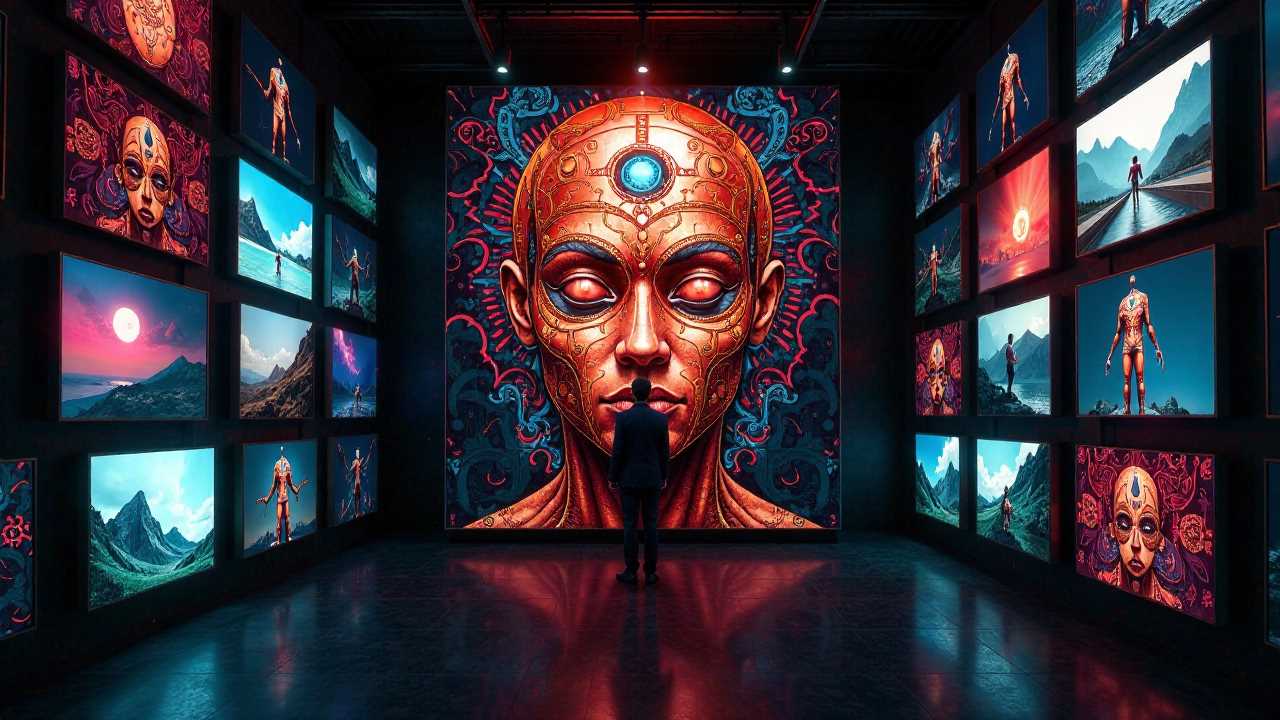
Understanding Matte Painting for Film
Matte painting for film is a vital technique that combines artistry and technology to create stunning visuals that transport audiences into fantastical worlds. This method involves the creation of detailed backgrounds and environments that are seamlessly integrated into live-action footage. As filmmakers strive for visual storytelling that captivates and engages viewers, mastering matte painting becomes an invaluable skill in the digital artist's toolkit.
The Role of Digital Techniques in Matte Painting
In the realm of matte painting, digital techniques have revolutionized the way artists approach their craft. Traditional methods, which often relied on physical canvases and paints, have evolved into sophisticated digital workflows. Software such as Adobe Photoshop, Corel Painter, and various 3D modeling programs enable artists to create intricate textures and lifelike environments with unparalleled precision.
Utilizing digital tools allows for rapid experimentation with color, composition, and texture. Artists can easily manipulate layers, apply filters, and adjust lighting to achieve the desired look. This flexibility not only enhances creativity but also streamlines the production process, enabling filmmakers to visualize their concepts more effectively.
Visual Storytelling Through Matte Painting
At its core, matte painting is a form of visual storytelling. Every brushstroke and color choice contributes to the narrative, setting the mood and tone of the scene. Artists must understand the story they are telling and how their work fits into the larger context of the film. This requires a keen sense of concept development, where artists collaborate with directors and cinematographers to align their vision with the film's overall aesthetic.
Effective visual storytelling hinges on the ability to evoke emotions and immerse the audience in the narrative. Artists must consider how elements such as light, shadow, and color can influence the viewer's perception. By mastering these aspects, matte painters can create scenes that resonate deeply with audiences, enhancing the film's impact.
Concept Development in Matte Painting
Concept development is a crucial phase in the matte painting process. It involves brainstorming and sketching initial ideas that align with the film's vision. Artists often create mood boards that compile references, color palettes, and textures to guide their work. This phase is not just about aesthetics; it is about understanding the story and the characters' journeys.
During concept development, collaboration with other departments is essential. Artists must communicate effectively with directors, production designers, and visual effects teams to ensure a cohesive vision. This collaborative spirit fosters creativity and innovation, resulting in matte paintings that enhance the film's narrative.
Composition Skills: The Foundation of Effective Matte Painting
Composition skills are fundamental to creating compelling matte paintings. A well-composed scene draws the viewer's eye and guides them through the narrative. Artists must understand principles such as balance, contrast, and focal points to create visually engaging images.
When composing a matte painting, artists should consider the rule of thirds, leading lines, and framing techniques. These elements help establish a sense of depth and perspective, making the scene feel more immersive. Additionally, understanding how to integrate foreground, midground, and background elements is essential for creating a sense of scale and realism.
Texture Creation: Bringing Environments to Life
Texture creation is another critical aspect of matte painting. Textures add depth and realism to the artwork, making environments feel tangible. Artists often use a combination of digital brushes, photographic references, and custom textures to achieve the desired effect.
When creating textures, it's essential to consider the materials present in the scene. For instance, a rocky landscape will require different textures than a lush forest. Artists must pay attention to details such as surface imperfections, weathering, and lighting variations to create believable environments.
Color Theory: The Emotional Language of Art
Color theory plays a significant role in matte painting, influencing the mood and atmosphere of a scene. Artists must understand how colors interact and the psychological effects they can have on viewers. For example, warm colors often evoke feelings of comfort and excitement, while cool colors can create a sense of calm or sadness.
When selecting a color palette, artists should consider the film's overall tone and the emotions they wish to convey. A well-thought-out color scheme can enhance the storytelling, drawing viewers into the world of the film and making them feel connected to the characters and their journeys.
The Future of Matte Painting in Film
As technology continues to advance, the future of matte painting for film looks promising. Emerging tools and techniques will further enhance the capabilities of digital artists, allowing them to push the boundaries of visual storytelling. By mastering digital techniques, honing composition skills, and understanding the principles of texture creation and color theory, artists can create breathtaking matte paintings that elevate the cinematic experience.
In summary, mastering matte painting for film requires a blend of artistic talent, technical skill, and a deep understanding of storytelling. By focusing on these key areas, artists can create stunning visuals that captivate audiences and leave a lasting impression.
 Digital Art InstructionDIY Infographics DesignMobile Game ArtworkPersonalized Logo Design3D AnimationeBook Covers DesignPrivacy PolicyTerms And Conditions
Digital Art InstructionDIY Infographics DesignMobile Game ArtworkPersonalized Logo Design3D AnimationeBook Covers DesignPrivacy PolicyTerms And Conditions
